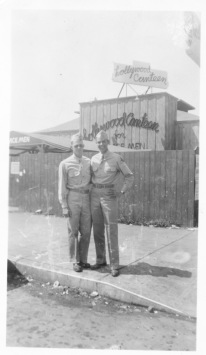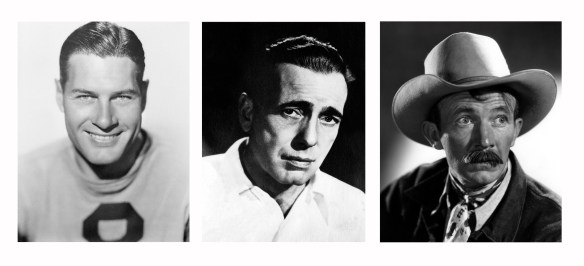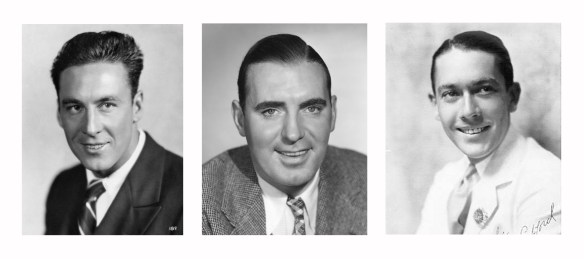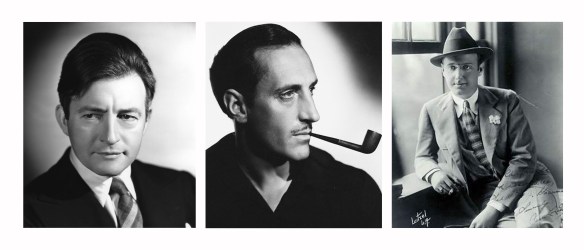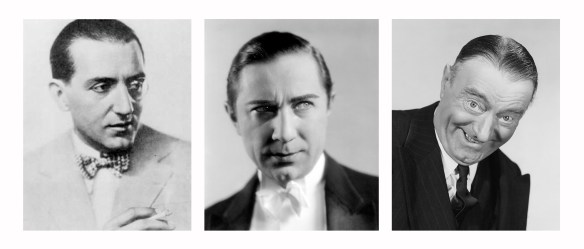It’s no secret that the Hollywood Comet loves musicals.
In 2010, I revealed I had seen 400 movie musicals over the course of eight years. Now that number is over 500. To celebrate and share this musical love, here is my weekly feature about musicals.
Stage Door Canteen (1943)
 Musical:
Musical:
Stage Door Canteen (1943) –Musical #138
Studio:
United Artists
Director:
Frank Borzage
Starring:
Lon McCallister, Marjorie Riordan, Cheryl Walker, William Terry, Sunset Carson, Margaret Early
Cameos:
Judith Anderson, Kenny Baker, Tallulah Bankhead, Ralph Bellamy, Jack Benny, Edgar Bergen, Ray Bolger, Helen Broderick, Ina Claire, Katharine Cornell, Lloyd Corrigan, Jane Darwell, William Demarest, Gracie Fields, Arlene Francis, Virginia Grey, Helen Hayes, Katharine Hepburn, Hugh Herbert, Jean Hersholt, Sam Jaffe, Allen Jenkins, George Jessel,Otto Kruger, Gertrude Lawrence, Gypsy Rose Lee, Alfred Lunt and Lynn Fontanne, Aline MacMahon, Ralph Morgan, Harpo Marx, Elsa Maxwell, Helen Menken, Ethel Merman, Peggy Moran, Alan Mowbray, Paul Muni, Merle Oberon, Franklin Pangborn, George Raft, Selena Royle, Martha Scott, Cornelia Otis Skinner, Ned Sparks, Ethel Waters, Johnny Weissmuller, Dame May Whitty, Ed Wynn, Count Basie, Xavier Cugat, Lina Romay, Benny Goodman, Peggy Lee, Kay Kyser, Guy Lombardo
Plot:
The film follows young women (Riordan, Walker, Early) who volunteer at the Stage Door Canteen in New York. Volunteering involves dancing with soldiers, talking to them and serving food. However, the canteen has strict rules-no dating servicemen. Eileen (Walker) admits to only volunteering, because she is hoping to be discovered as an actress by one of the celebrities. But her selfish ways are shaken when she meets soldier Dakota (Terry). Innocent soldier, California (McCallister) doesn’t have a girl back home, writes letters to his father and has never been kissed. He meets Jean (Riordan) at the canteen and tells her she has given him his happiest moments since he has joined the service.
The majority of the film is made up of cameos by famous Broadway and Hollywood stars including Gypsy Rose Lee, George Raft, Johnny Weismuller and Katharine Cornell. The romances are a backdrop for the performances, stringing the film together.
Trivia:
-The real Stage Door Canteen was on 44th Street in New York, but the movie was filmed in Hollywood.
-Stage actress Katharine Cornell’s only film appearance.
-The story line was inspired by the Irving Berlin song “I Left My Heart at the Stage Door Canteen.”
-A portion of the money that the film made was donated to the Stage Door Canteen. “Stage Door Canteen” was the top grossing film of the year, making $4,339,500, according to George Raft: The Films by Everett Aaker
-Katharine Hepburn’s only musical film, though she is never in a musical number.
-Peggy Lee’s second film appearance
-Ruth Roman’s first film appearance.
Highlights:
-Katharine Cornell plays a scene from Romeo and Juliet with Lon McCallister.
-Cornell gives a young British soldier cake and an orange. He is overcome with joy because of the orange and says “I haven’t seen one of these in two years. It’s like Christmas!” Tear worthy.
-Katharine Hepburn gives Eileen (Walker) a talking to of why she needs to continue serving in the canteen even though her fiance is fighting overseas. Probably the most dramatic scene of the film.
-Ventriloquist Edgar Bergan with his puppets Charlie McCarthy and Mortimer Snerd.
Notable Songs:
-“The Girl I Love to Leave Behind” sung by Roy Bolger
-“She’s a Bombshell from Brooklyn” performed by Xavier Cugat and Lina Romay
-“We Mustn’t Say Goodnight” sung by Lanny Ross
-“Sleep, Baby, Sleep in Your Jeep” performed by the Guy Lombardo Orchestra
-“Quick Sands” performed by Count Bassie and Ethel Waters
-“Goodnight Sweetheart” performed by Benny Goodman, Guy Lombardo and sung by Kenny Baker
-“Ave Maria” performed by violinist Yehudi Menuhin
My Review:
I love this movie. Before seeing this movie for the first time several years ago, I wasn’t familiar with stage stars such as Helen Menken or Katharine Cornell. But the film opened shows the other side of entertainment, showing the past celebrities of the east coast. Though the main story line is brief and thin, I still enjoy it. A boy and girl becoming attached after dancing and talking all night and the boy not knowing if he will return from the war? I think that’s believable.
The movie also has several scenes that are very touching and make me tear up: the British boy having an orange for the first time in two years, Lon McCallister getting his first kiss. Yep, the waterworks are running.
If you are looking for a film with a strong plot line and character development, “Stage Door Canteen” probably isn’t for you. But if you are hoping to get a glimpse into the past-to see how soldiers may have spent their leave and what songs and stars were popular-this movie is 2 hours and 10 minutes of your day well spent.






